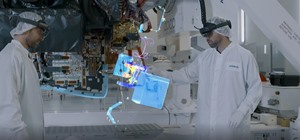

We conclude that the direct approach is more suitable over short time-scales (“tactical” level), whilst indirect methods allow to specify more abstract long-term objectives (“operational” level), making them naturally complementary.

Human factors aspects related to drone swarm control are identified and both control methods are discussed from the human operator’s usage point of view. Simulation results are used to illustrate the concept and perform a quantitative performance analysis of both control methods in different scenarios. simultaneously intuitive, easy to use, powerful and flexible, Graphical User Interfaces (GUI) that would allow a single operator to choreograph a swarm’s actions. We present two families of control methods, direct and indirect, that we believe could be used to design suitable, i.e. On the other, retaining an ability to exercise some control over the swarm’s objectives and real-time behaviour is obviously paramount. On the one hand, low-level “micro-management” of every unit clearly nullifies many of the advantages of using swarms. Although substantially increased autonomy for navigation, data collection and decision-making is very much part of the “collective artificial intelligence” vision, this expected development raises questions about the most productive form of interaction between the swarm and its human operator(s). It is widely recognised that swarms are the likely next step for Unmanned Aerial Vehicle (UAV) or drone technology. Automation transparency as a high-level design objective may be useful for expert designers whereas, usability design guidelines, as “building blocks” to transparency, may be a useful tool for new system designers. By defining and setting automation transparency as an overarching design objective and identifying specific transparency and usability issues within existing GCS designs, we weress able to design and prototype an enhanced interface that more effectively supported human-automation interaction.

The enhanced features were also found to promote operator understanding of the system and mitigate workload. Results revealed participants using the enhanced interface to produce significantly faster task completion times and greater accuracy across all UAV control tasks. Each participant was tested in four trials of a typical military concept of UAV operation with different mission maps and vehicle speeds. Each participant was extensively trained in the use of one of the interfaces and all simulated UAV control tasks. In this study, we made comparison of a “baseline” control interface mimicking an existing available UAV ground control station with an “enhanced” interface designed with improved functional transparency and usability, and a “degraded” interface which removed important design features. Many usability principles for complex systems design implicitly target the concept of transparency. A basic notion of transparency in automated systems design is the need to support user tracking and understanding of system states.


 0 kommentar(er)
0 kommentar(er)
